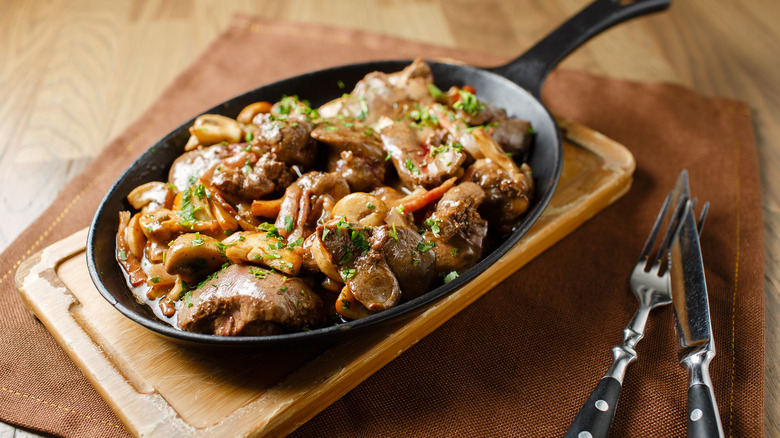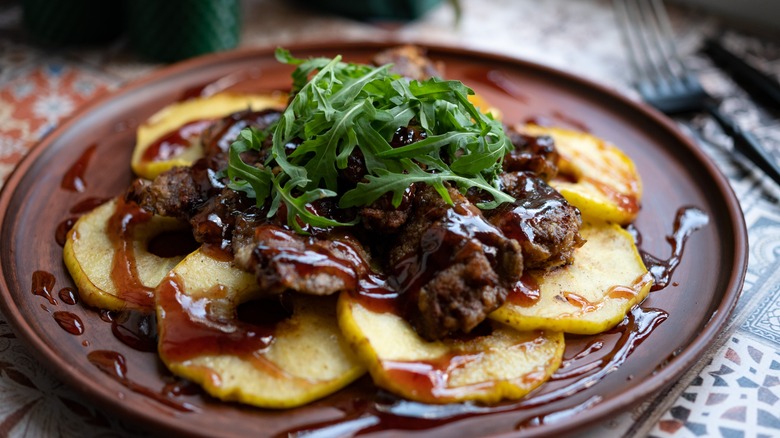The Chef-Approved Way To Cook Liver To Win Over The Biggest Skeptics
Along with Brussels sprouts and turnips, liver is often considered one of the most-hated foods in the U.S. Though very nutrient-rich and considered to be a superfood, liver still has a bad reputation. Beef liver in particular has a much stronger and gamier taste than chicken, pork, and lamb liver, but according to chef Ryan Ratino, any liver can be delicious with the right preparation. Ratino is the critically acclaimed chef of the two-Michelin-starred Jônt, the one Michelin-starred Bresca, Maass at Four Seasons Fort Lauderdale, and Ômo by Jônt, so we're confident that he knows the absolute best ways to cook liver.
As Ratino told us: "Every liver will need to be prepared different but they are so tasty!" He recommends brining the liver before cooking. According to a research study in the National Library of Medicine, brining liver in as little as a 1-percent salt solution for 60 minutes substantially decreases its odor. Liver's aggressive flavor can also be reduced by marinating it in whole milk or buttermilk for 30 minutes or up to three hours. Soaking liver in buttermilk has a tenderizing effect and removes any metallic taste caused by blood or impurities.
After the liver has been soaked sufficiently, remove it from the milk, rinse it under water, and pat dry. Next, you'll need to clean the liver by removing its outer membrane and its veins. Peel off the membrane, and pry the two lobes apart. Locate the vein that connects the lobes, cut it with a sharp knife, then gently pull it out. Finally, cut the liver into slices, and you're ready to cook them.
Saucing liver makes it even more delicious
Cooking liver only takes a few minutes. Heat some oil in a heavy skillet over medium-high and, when it's hot, season the liver slices and add them to the pan. Brown one side, then flip the slices over and finish cooking them until, as the USDA recommends, the liver's internal temperature is 160 degrees Fahrenheit. To improve liver's palatability, Ratino suggests, "When cooking, glazing [the liver] with a good cognac and sauce will always help." A cognac glaze can be quickly made by combining cognac, orange juice, brown sugar, honey, and orange zest in a saucepan and reducing the sauce until it thickens. Spooned over liver, the glaze will help mask any strong taste that the liver may have retained.
By adding beef stock to classic liver and onions, you'll have a rich and savory gravy. You could make another memorable meal by combining chopped cooked bacon with the liver and onions and then stirring a little bacon grease into the gravy. Other sauces you might try that pair well with liver are a mushroom-cream sauce or a red wine sauce. Chicken livers are the mildest of animal livers, and after being sauteed in butter, shallots, and wine, they're whipped up into an elegant chicken liver mousse that you could serve at any dinner party. With so many possibilities for saucing liver, you could very well change a liver-hater into a liver-lover.

